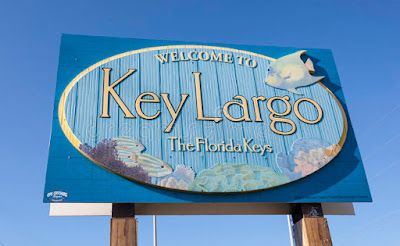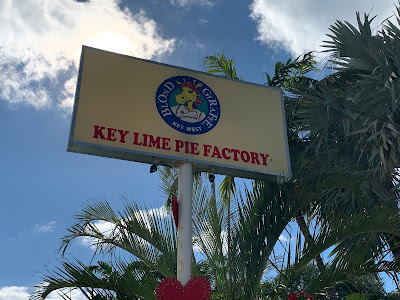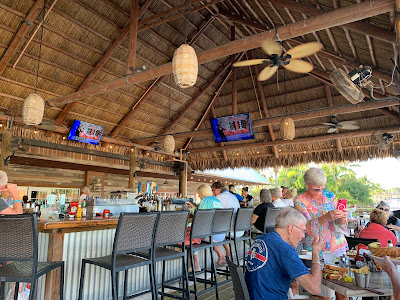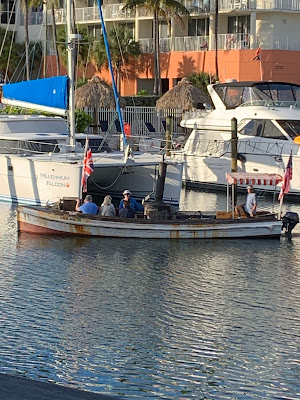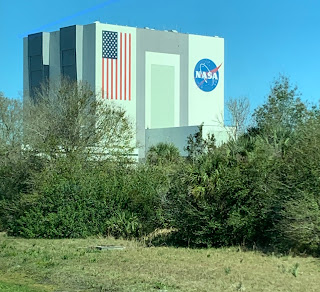Florida has given us an opportunity to explore many new areas so we decided to take a break and head south. First stop was the Kennedy Space Center.
Since this was a last minute trip we really hadn't researched much so we just got in line not knowing what we'd find.
The John F. Kennedy Space Center is where the dream of human spaceflight turns into reality. Originally named the Launch Operations Center in 1962, it was renamed in November, 1963 after President Kennedy's assassination.
Located on Florida's Space Coast by the Atlantic Ocean less than an hour east of Orlando, the center covers more than 140,000 acres of land, swamp, and waterways. It is a working government facility where men and women push the limits of scientific knowledge.
KSC shares its property with Merritt Island National Wildlife Refuge, and in 1975 Congress designated nearly half of the Space Center as part of the Canaveral National Seashore. An incredible relationship exists between the world's most advanced technology and nature.
The Rocket Garden offers visitors a chance to walk up to and around the base of the Mercury-Redstone, Mercury Atlas, and other historic rockets that first put Americans and satellites in space. Except for the giant Apollo Saturn 1B rocket displayed horizontally, all of the rockets were originally designed for military use and were adapted by the space program for peaceful exploration. The Saturn 1B was designed from scratch by NASA.
We found our way to the bus center where after a 15 minute ride, our final destination would be the Saturn V center.
It was hard to take photos from the bus but I was able to capture the Vehicle Assembly Building (VAB). This is one of the world's largest structures in volume, enclosing about 129,428,000 cubic feet. It stands 525 feet tall and covers eight acres. It was here that space shuttles were assembled into flight-ready space vehicles before being transported to the launch pad.
Unfortunately, we weren't able to see the Crawler-Transporter which is the machine used to move spacecraft to the launch pad. When it was loaded with the space shuttle, it carried more than 18 million pounds at a speed of about 1 mile per hour. Not the best gas mileage as it used about a gallon of gas for every 38 feet traveled.
The launch pads were originally built for the huge Apollo/Saturn V rockets that launched American astronauts on their historic journeys to the moon and back.
We arrived at the center and found some incredible displays.
The Apollo 14 capsule, named
Kitty Hawk, was crafted with more than 2,000,000 parts, nearly 15 miles of wire; a control panel with 24 instruments, 566 switches, 40 indicators, and 71 lights. It would take a journey of 500,000 miles before it safely delivered the crew back home with a cargo of more than 100 pounds of moon rocks.
Apollo 14 capsule
We've all heard about the moon rocks - it was interesting to see the "real thing".
These overshoes protected the spacesuit's inner boot, and could be left outside the lunar module to avoid bringing moon dust aboard the spacecraft.
This spacesuit was used for training at Kennedy Space Center. It is one of three custom suits made for Apollo 17 astronaut Gene Cernan.
The theater inside the center is an authentic representation of the original 1960's version, containing the actual launch consoles NASA used during Apollo.
The screens show original news clips from the early years of NASA and ends with footage from Apollo 8.
And there on the screen was famed astronaut Jim Lovell, commander of Apollo 13.
Houston, we have a problem
The space shuttle exhibit shows a full-scale external tank and two solid rocket boosters which serves a grand gateway for guests. The external tank is suspended 24 feet above the ground between two solid rocket boosters. The space shuttle stack reaches 184 feet in the air.
There was a nice display about the different shuttles and, of course, a special dedication to the astronauts who gave their lives in order to explore the unknown. Probably the most 'famous' was Christa McAuliffe, the first teacher to go to space.
One of the most memorable moments of Ronald Reagan's presidency.
The Kennedy Space Center is the permanent home for space shuttle Atlantis which is raised 30 feet off the ground and rotated 43.21 degrees - as if she were in space. This is the view that only the astronauts from its 33 missions have had a chance to see from the International Space Station.
You can see across the arm Canada who built the arm.
And you could take a walk through the mock-up of the command center of the shuttle.
And sit inside as if you are piloting the shuttle.
I couldn't find an opportunity to take a photo without someone in the seat
This space-flown tool box held tools needed for spacewalks and onboard repairs. The box was padded to protect tools during launch, reentry, and in the micro-gravity of space.
I'd be surprised if this was really the world's largest shop, space or otherwise. But it was interesting to look inside.
And with that, it was time to go. While we could have used more time, we had a great day and I'm so glad we had an opportunity to visit.
